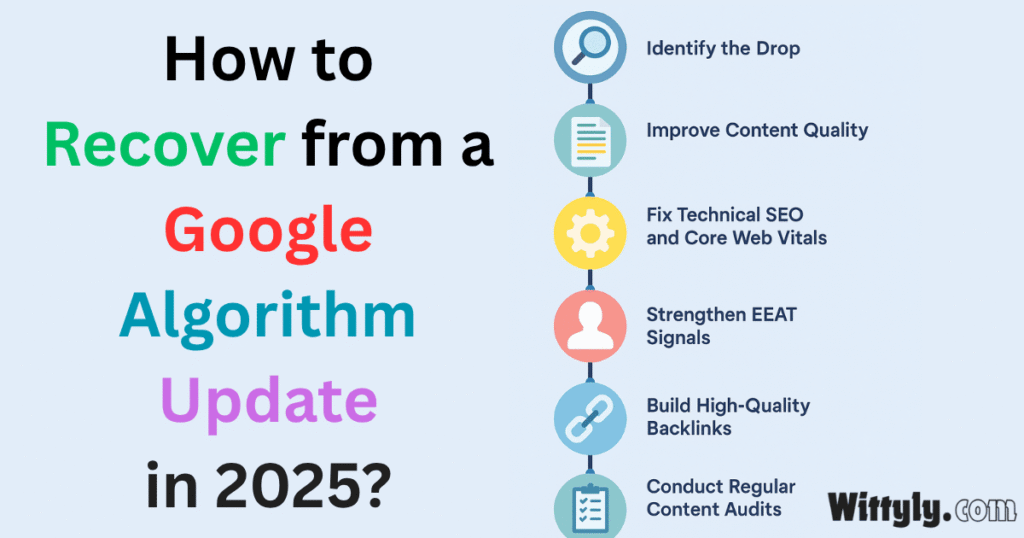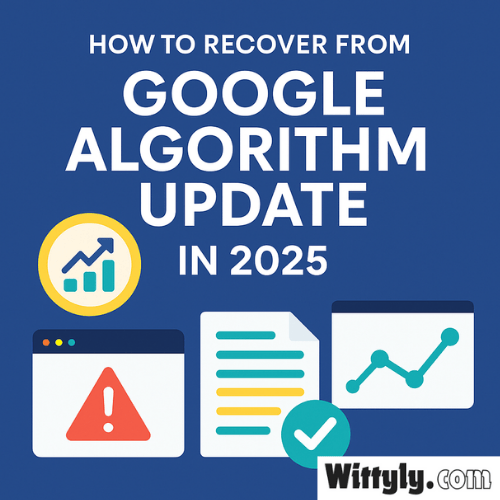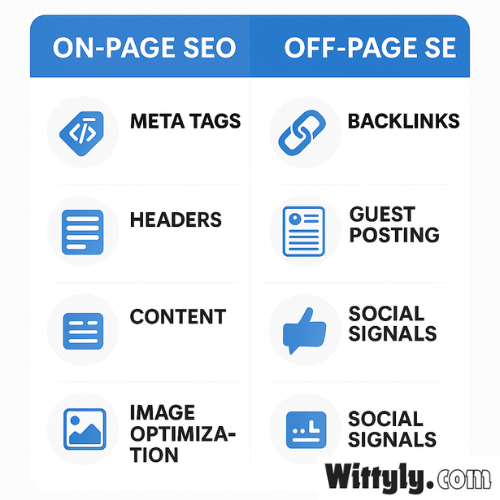Key Takeaways:
- Learn How to Recover from Google Algorithm Update in 2025.
- Google’s 2025 updates focus heavily on EEAT (Experience, Expertise, Authoritativeness, Trustworthiness), AI content detection, and helpful content.
- Core Web Vitals and mobile-first indexing are critical for maintaining rankings and avoiding penalties.
- Content audits and updates are essential—remove thin content, improve outdated posts, and match user intent.
- Avoid relying on pure AI content. Humanize and personalize your articles to pass AI detection filters.
- Use Google Search Console and Analytics to track traffic drops and identify affected pages.
- Strengthen EEAT signals with author bios, credentials, trust pages, and authoritative references.
- Fix technical SEO issues to improve loading speed, responsiveness, and mobile usability.
- Recovery takes time, but with consistent effort and quality updates, your rankings can bounce back stronger.
If your website traffic suddenly dropped and rankings slipped overnight, chances are you’ve been hit by a Google algorithm update. You’re not alone. With the rise of AI-generated content and ever-evolving ranking signals, keeping your SEO strategy up to date is more critical than ever. In this guide, we’ll explore how to recover from Google algorithm update in 2025, what Google’s latest changes focus on, and how to future-proof your content to avoid penalties in the first place.
Why Is It Important to Keep Track of Google Algorithm Updates?
Before diving into recovery strategies, it’s crucial to understand why is it important to keep track of Google algorithm updates in the first place. Google makes thousands of changes to its algorithm every year—some small, some game-changing. Each update aims to improve search quality and user experience.
Missing these updates could mean:
- Loss in keyword rankings
- Decreased organic traffic
- Poor user experience on your site
- Reduced domain authority
Tracking algorithm changes allows you to adapt your SEO strategy in real-time, stay competitive, and maintain visibility. Now, let’s break down the key areas of focus in the 2025 updates.
What Google’s 2025 Algorithm Updates Focus On
1. EEAT: Experience, Expertise, Authoritativeness, Trustworthiness
Google has doubled down on EEAT, the expanded version of EAT. Websites now need to show not just expertise, but first-hand experience. This is especially important in niches like health, finance, and education.
Recovery Tip:
Update your content to reflect real-life experience. Add case studies, testimonials, original data, and credentials of content creators. Author bios with verified credentials can significantly boost your trustworthiness.
2. AI Content Detection
Google’s latest algorithm has become more adept at spotting low-value, AI-generated content. While AI can assist in writing, publishing unedited AI text could lead to penalties.
Recovery Tip:
Use AI as a tool, not a replacement. Humanize your content. Add insights, context, and value that only a real person can provide. Run your content through AI detectors if needed, and rewrite areas that sound robotic.
3. Helpful Content System
The “Helpful Content” update rewards content that genuinely answers user queries and penalizes clickbait or vague posts written solely for SEO.
Recovery Tip:
Audit your site and remove or update thin content. Focus on meeting search intent. Use tools like Google Search Console to analyze bounce rates and time-on-page. If people are leaving quickly, your content probably isn’t helping them.
How to Recover from a Google Algorithm Update

Now that we understand what the algorithm is targeting, let’s explore how to recover from a Google algorithm update effectively and efficiently.
Step 1: Identify the Drop
Start with Google Search Console and Google Analytics. Identify which pages lost traffic and when. Was it just one page or site-wide? Match this data with the timeline of the latest update.
Use the following tools:
- Google Search Console (Performance > Pages > Queries)
- Ahrefs or Semrush (Track keyword drops)
- Rank Math or Yoast (Technical SEO analysis)
Step 2: Improve Content Quality
Content is still king—Google just expects more from it now.
- Update outdated statistics and references
- Add images, charts, or videos to make content interactive
- Improve readability and structure (use bullet points, H2/H3 headings)
- Eliminate fluff and keyword stuffing
Make sure your content truly answers the user’s query. Adding value is now non-negotiable.
Step 3: Fix Technical SEO and Core Web Vitals
Another big reason websites drop in rankings is poor technical SEO, especially after algorithm rollouts.
Optimize Core Web Vitals:
These include:
- LCP (Largest Contentful Paint): Keep it under 2.5 seconds
- FID (First Input Delay): Less than 100ms
- CLS (Cumulative Layout Shift): Keep it under 0.1
Use PageSpeed Insights to measure and improve your score.
Mobile-First Indexing
Since Google indexes the mobile version of your website, poor mobile experience = ranking losses.
Fixes:
- Use responsive design
- Eliminate popups that block content
- Ensure font sizes and buttons are mobile-friendly
Step 4: Strengthen EEAT Signals
Add trust-building features across your site:
- Author pages with bios, LinkedIn profiles, and credentials
- Reference reputable sources (studies, official sites)
- Include an “About Us” page explaining your mission
- Display trust badges, privacy policy, and terms of service
EEAT signals show Google your content is credible and safe to rank.
Step 5: Build High-Quality Backlinks
While content and UX are key, backlinks still matter—especially from high-authority domains.
- Guest post on reputable industry blogs
- Get featured in roundups and expert opinion posts
- Use digital PR to get mentions from news outlets
Avoid spammy backlinks. They do more harm than good after core updates.
Step 6: Regular Content Audits
Recovery is not a one-time fix. You need to stay ahead of future updates.
- Run monthly content audits
- Remove outdated posts or redirect them
- Refresh old blogs with updated stats and new sections
- Interlink newer pages with older, relevant content
Google rewards fresh, relevant, and well-organized content ecosystems.
How Often Does Google Update Street View — and Why That Matters
You might wonder, how often does Google update Street View and what does that have to do with your website? While it’s not directly linked to SEO rankings, it highlights Google’s commitment to real-time accuracy. Street View updates vary by region—urban areas may see annual updates, while rural areas take longer.
This constant refresh reflects how Google wants the web to evolve too. Just like they update visuals for the real world, they expect digital content to stay relevant and timely. That’s why staying ahead of algorithm changes is essential—Google’s crawlers are always watching.
Algorithm-Proofing Your Content for the Future
The best way to recover from an algorithm update is not to get hit in the first place. Here’s how to “algorithm-proof” your content in 2025:
- Write for humans first, search engines second
- Be original. Add experience, opinions, and unique insights
- Test page speed and mobile responsiveness regularly
- Build topical authority in your niche through interlinked content clusters
- Avoid manipulative SEO tactics like keyword stuffing or hidden text
- Focus on long-term strategies, not hacks
Read more: How to Improve SEO in 2025?
Final Thoughts
Recovering from a Google algorithm update in 2025 is challenging—but entirely possible. Start by understanding what triggered the penalty, focus on EEAT, improve Core Web Vitals, and publish truly helpful, trustworthy content.
Whether you’ve been hit or want to protect yourself from future updates, the key is to stay informed, adapt fast, and prioritize real user value.
Remember, how to recover from Google algorithm update is less about chasing rankings and more about building a sustainable, credible presence online.
✅ FAQs
Q1: How do I know if I’ve been hit by a Google algorithm update?
If your website traffic or rankings suddenly drop, check Google Search Console and analytics for the exact date. Compare it with known update dates. If the timing matches, it’s likely due to an algorithm change.
Q2: What are the most common reasons websites are penalized during updates?
The most common reasons include low-quality or AI-generated content, poor mobile experience, lack of EEAT (Experience, Expertise, Authoritativeness, Trustworthiness), and slow loading speeds.
Q3: How long does it take to recover from a Google algorithm update?
Recovery time varies. Minor improvements can show results within weeks, but larger changes may take 2–3 months or more. Consistency and regular updates are key.
Q4: Should I delete content that’s no longer performing?
Yes, but only if it’s thin, irrelevant, or beyond updating. In many cases, it’s better to refresh the content with new information and optimize it for current SEO standards.
Q5: Is it safe to use AI tools for content creation in 2025?
Yes, but with caution. Use AI tools to assist—not replace—human input. Always review, edit, and personalize AI-generated content to ensure quality and authenticity. Google’s algorithm now penalizes low-effort, purely AI-written content.
Wittyly is a content-driven platform powered by a team of SEO experts, writers, and digital marketers who are passionate about helping businesses grow online. From actionable marketing guides to expertly crafted branding strategies, Wittyly delivers high-quality, well-researched content you can trust. Every article is professionally written and thoroughly proofread to ensure accuracy, clarity, and value for readers across industries.
Email: Contact@wittyly.com



